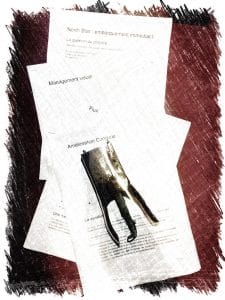Second article sur le Boooksprint ayant eu lieu en cette fin d’année 2016 avec les Boooksquetaires Goood!.
Suite à la phase de préparation où nous avons défini périmètre, management visuel et règles de fonctionnement, nous voilà partis sur le PI #1 ! Je ne décrirai pas ici le contenu des modules au coeur de l’Agile Rocket (Management visuel, Amélioration continue, Flux et North Star), mais plutôt leur processus d’écriture. Je vous propose de suivre le déroulement de la première (demi) journée de PI #1, de ma perspective, comme si vous y étiez !
Prêts pour le décollage ? 😉
La série d’articles Boooksprint :
- Boooksprint : embarquement pour l’Agile Rocket
- Booksprint : au coeur du PI # 1 (Partie 1)
- Booksprint : au coeur du PI # 1 (Partie 2)
- Booksprint : l’expérience d’équipe distribuée
- Booksprint : fin de l’aventure
De l’inspiration avant de démarrer

La fin du Sprint 0 nous emmena à l’heure du déjeuner, l’occasion d’aller prendre un peu l’air avant de nous focaliser. Quoi de mieux que la mer et les menhirs pour se ressourcer ! Le temps était par chance de la partie et la beauté du paysage nous a probablement tous inspirés : c’est aussi cela l’expérience booksprint, sortir du cadre pour favoriser la créativité ! 😉
14.00 – Sprint planning
Nous avions le périmètre complet du PI #1, mais que serions-nous effectivement capables de réaliser en 3h, la durée initialement définie pour notre premier sprint ? Je sentais que l’on avait tous envie d’y aller, mais que l’on était encore un peu dans le flou sur comment s’y prendre.
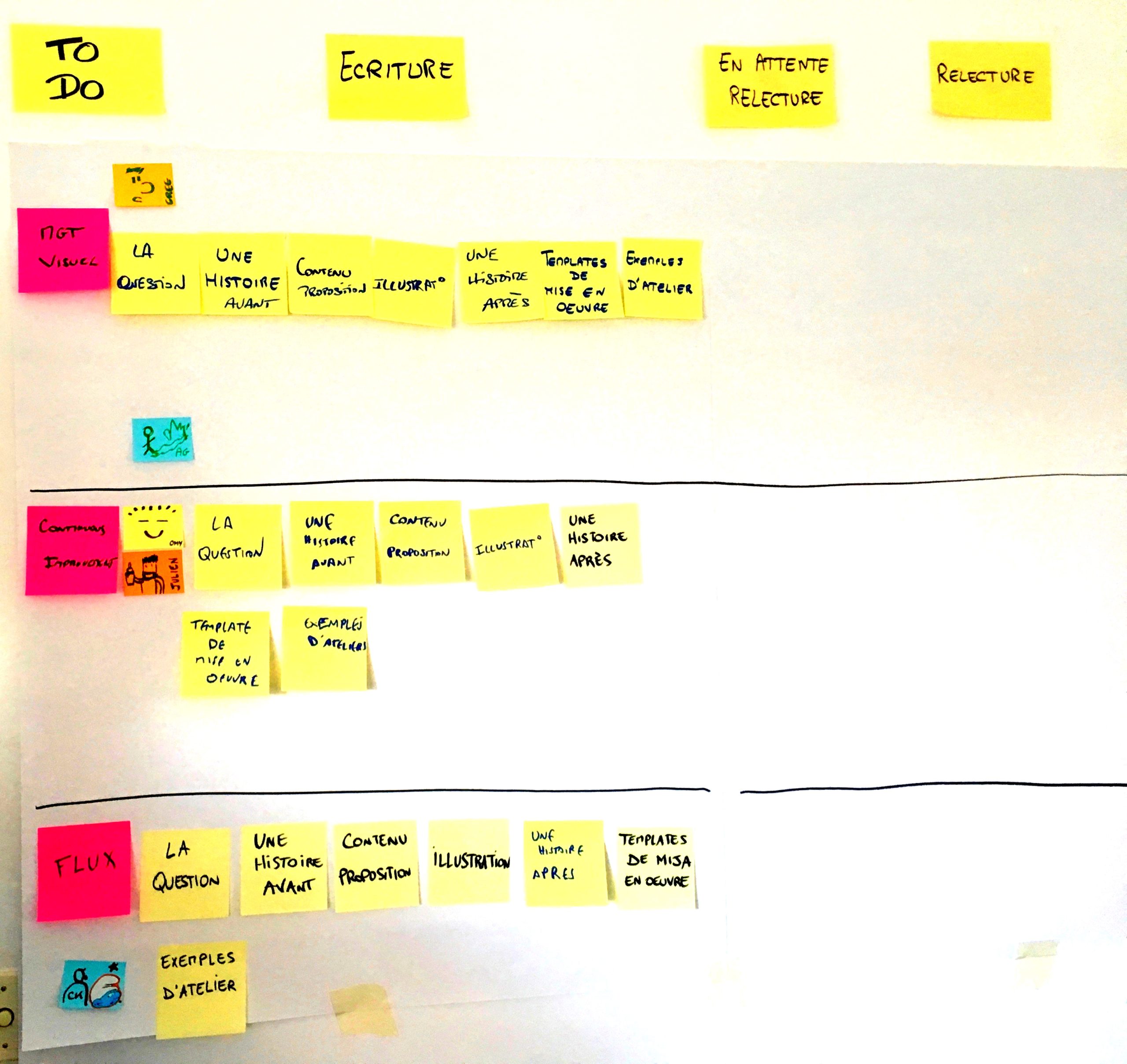
Nous avons donc décidé de former des binômes pour commencer :
- Arnaud et Grégory s’occuperont du module « Management Visuel » : Arnaud a déjà pu expérimenter le module dans une équipe et Grégory pourrait lui apporter un regard extérieur.
- Julien et moi sommes partis sur le module « Amélioration Continue » : la structuration de démarche d’amélioration continue est mon sujet du moment, Julien m’apportera ses lumières.
Quant à Christophe, il se lança au coeur du module « Flux » sur lequel nous avions initialement moins de contenu.
Chaque groupe décide alors de travailler dans des endroits différents avant de se retrouver à 15.30 pour notre stand-up de milieu de sprint !
14.15 – On déblaie et on se questionne
Nous partons donc nous isoler avec Julien pour commencer à écrire. Notre première étape consiste alors à structurer notre document à partir des éléments clés du chapitre.
Pour rappel :
- La Question : résume la ou les problématiques adressées dans le module
- Une histoire Avant : introduction de la problématique sous forme d’histoire
- Contenu : description de la proposition d’accompagnement correspondant au module
- Illustrations
- Une histoire Après : description des bénéfices obtenus après l’accompagnement
- Templates de mise en oeuvre : processus type d’accompagnement
- Exemples d’ateliers : liens vers des sources externes décrivant les ateliers proposés
Je propose à Julien de nous séparer le travail dans un premier temps pour pouvoir déblayer un petit peu le terrain :
- Je me lance de mon côté dans la partie Contenu afin de poser les différents sujets que j’avais en tête à l’écrit.
- Julien, de nature plus créative que moi, va démarrer sur les parties Histoires.
Christophe nous rappelle que du contenu est déjà disponible sur Google Drive et que notre travail devrait surtout être de la structuration d’informations.
Je m’empresse alors de chercher ces supports afin de m’appuyer dessus et en effet, c’est une mine d’or ! Extension du management visuel, approche évolutionnaire, protocole d’amélioration continue… j’insère au fur et à mesure les données qui me paraissent pertinentes mais je sens que quelque chose ne tourne pas rond : Julien semble avoir des difficultés à construire les histoires, peut-être parce qu’il connaît un peu moins bien le contexte du module, ce qui peut limiter sa créativité. Il me propose toutefois, dans sa réflexion, d’ajouter une partie « Une histoire Pendant » permettant d’avoir une granularité plus fine dans la description de l’accompagnement ce que je trouve très intéressant ! Cela montre bien la valeur et le potentiel des idées émergeant de l’empirisme ! 😉
Nous rencontrons cependant un problème de taille : difficile de savoir quel style d’écriture adopter, que ce soit pour les histoires ou pour le contenu. Doit-on rester dans le narratif ? Le contenu est-il une continuité de l’histoire ? D’ailleurs, ce module arrivant potentiellement après le module de Management Visuel, devons-nous faire un lien avec lui ? C’est avec cet ensemble de questions que nous arrivons finalement à l’heure du Stand-up : le temps passe très vite ! 🙂
15.30 – Stand-up : recherche d’alignement
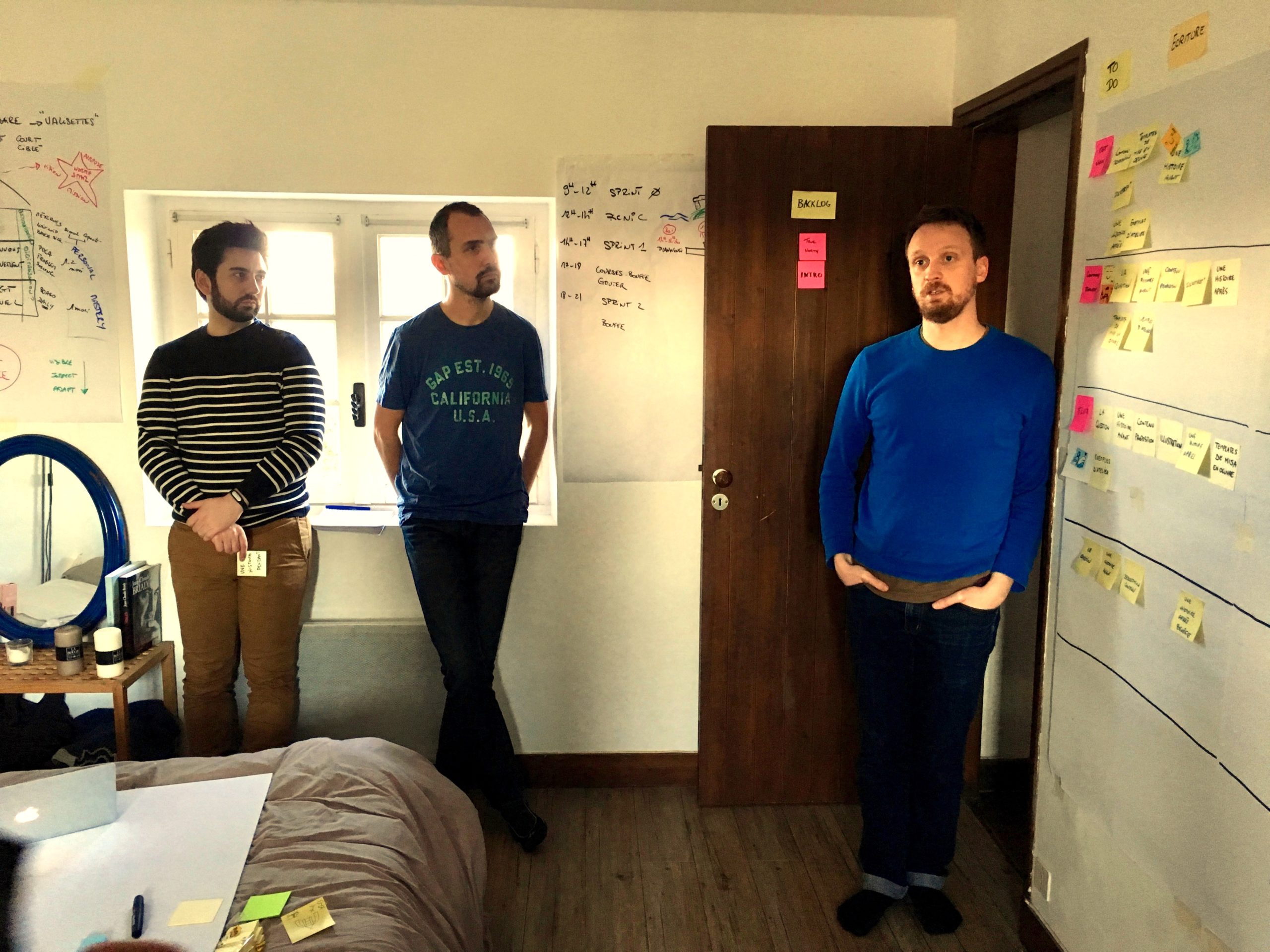
Notre premier Stand-up fut l’un des moments critiques de l’expérience. Ce fut de ma perspective un exemple concret de la phase de Storming du modèle de Tuckman :
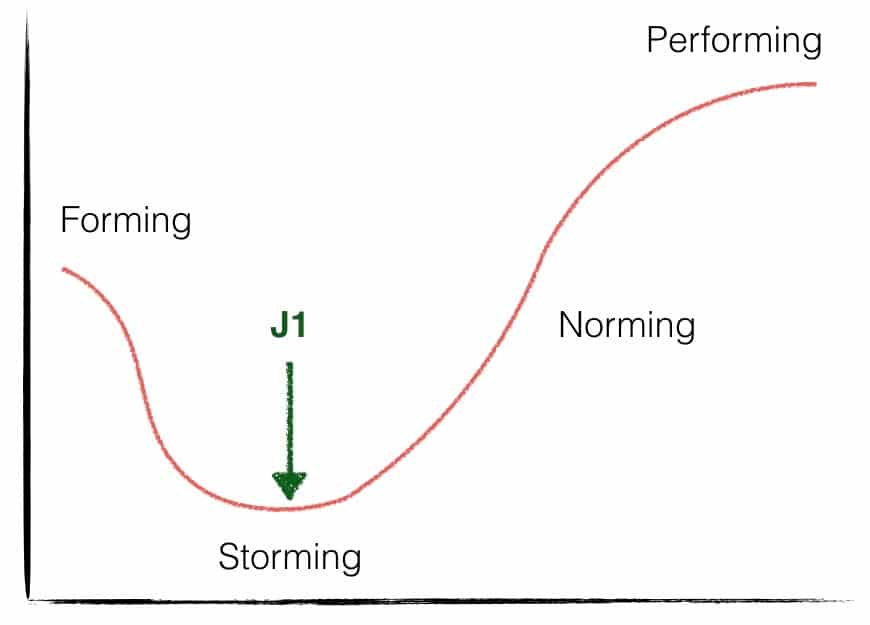
Les membres commencent à partager leurs sentiments mais se voient encore comme des individus
plus que membres d’une équipe. Il y a une forme de résistance et des conflits peuvent survenir.
En effet, personne ne semblait réussir à trouver sa place. Peut-être était-ce dû à l’hétérogénéité du niveau de connaissance de l’Agile Rocket ou à cette expérience d’écriture, probablement nouvelle pour la plupart d’entre-nous. Seul Christophe avait une idée plus précise de ce à quoi cela devrait ressembler : son précédent booksprint lui donnait un référentiel concret sur lequel se raccrocher et il tenta au mieux de nous le partager.
Nous avons ainsi échangé sur nos stratégies qui se sont avérées plutôt différentes :
- Arnaud et Grégory se sont focalisés sur la partie Histoire, travaillant en binôme tout du long. Leur logique était que de l’histoire découlerait le reste.
- De notre côté, nous nous sommes répartis l’effort. Notre logique était de poser d’abord le contenu puis de le contextualiser.
Il était alors clair que nous n’avions pas la même compréhension de ce que l’on devait faire. De plus, le doute qui planait sur le style d’écriture s’est avéré partagé et nous n’avons pas réussi à trouver quelque chose qui parlait à tous.
Christophe a ré-insisté sur le fait que nous devrions déjà avoir suffisamment de contenu sur notre Drive, le tout étant de le réorganiser pour lui donner plus de corps. Cela m’a personnellement rassuré dans le sens où j’avais l’impression que nous avions pris la bonne direction, il ne nous manquait plus que ce petit truc pour nous aligner.
Christophe a alors proposé de mettre la priorité sur le groupe et d’être « dérangeable » au besoin. Autrement dit, il sera plus important d’aider les membres de l’équipe à être plus autonomes sur leur sujet plutôt que d’avancer sur le sien. Il agira alors comme le PO du projet ce qui apparu pertinent pour tout le monde.
Malgré cela, on pouvait encore sentir un certain malaise en quittant le Stand-up, probablement induit par un flou encore trop présent dans l’esprit de chacun. Nous repartons néanmoins tous avec l’envie de faire mieux, pour se retrouver dans moins d’une heure pour la revue et la rétrospective.
Note : Notre réunion dura environ 40 mn, nous avons rencontré la difficulté des équipes à garder le temps de synchronisation court. Cependant, notre phase de planning ayant été particulièrement courte et étant en tout début de projet, ce temps semblait nécessaire pour partager nos craintes et doutes pour la suite.
16.10 – Écriture
Repartis dans notre coin avec Julien, nous décidons cette fois de procéder autrement.Nous allons parcourir ensemble le contenu pour bien s’en imprégner. Cela nous a finalement été très bénéfique car les différents sujets ont mené à des échanges intéressants autour de nos pratiques sur le terrain et sur comment nous pourrions rendre l’amélioration continue plus pertinente pour les équipes : quelle chance, c’est justement le sujet de notre module ! 😉
Nous nous sommes alors focalisés ensemble sur la partie Contenu, au coeur du module, pour plaquer le périmètre global que l’on considérait pertinent d’évoquer. Puis Julien est parti sur une phase de relecture à partir du haut du document pendant que je continuais à alimenter le bas du document : itératif et incrémental n’est-ce pas ? 😛
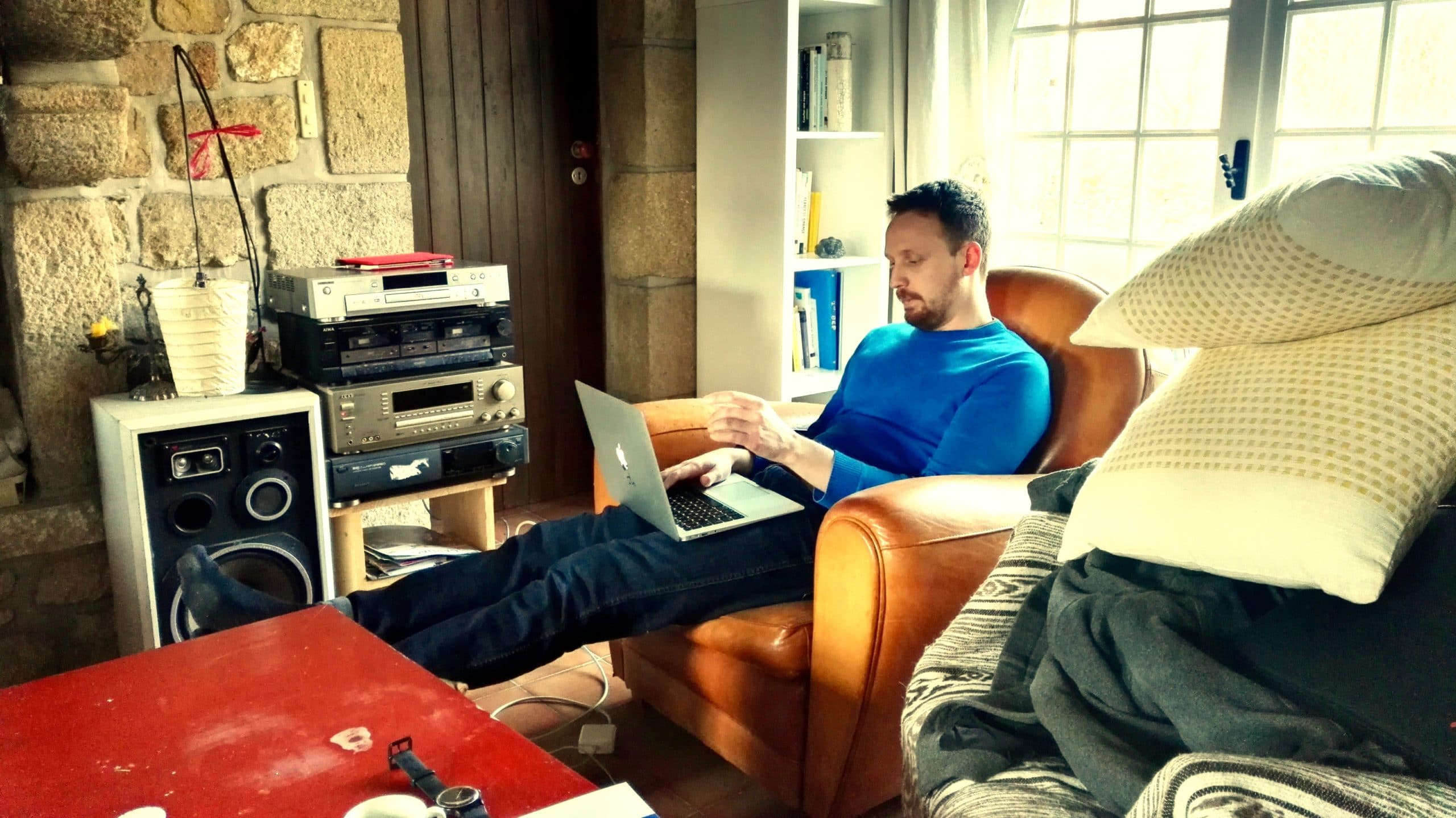
Quelques minutes avant le prochain point de synchronisation, je suis passé voir Arnaud et Grégory pour voir comment cela se passait de leur côté. Ils avaient également décidé de changer leur stratégie pour travailler individuellement plus longtemps cette fois-ci. Comme quoi, le stand-up précédent nous a donné des idées d’expérimentations : il nous faut apprendre sur notre mode de fonctionnement en équipe (ou de binôme dans ce cas) pour trouver la combinaison et le rythme qui nous conviennent !
17.00 – Revue
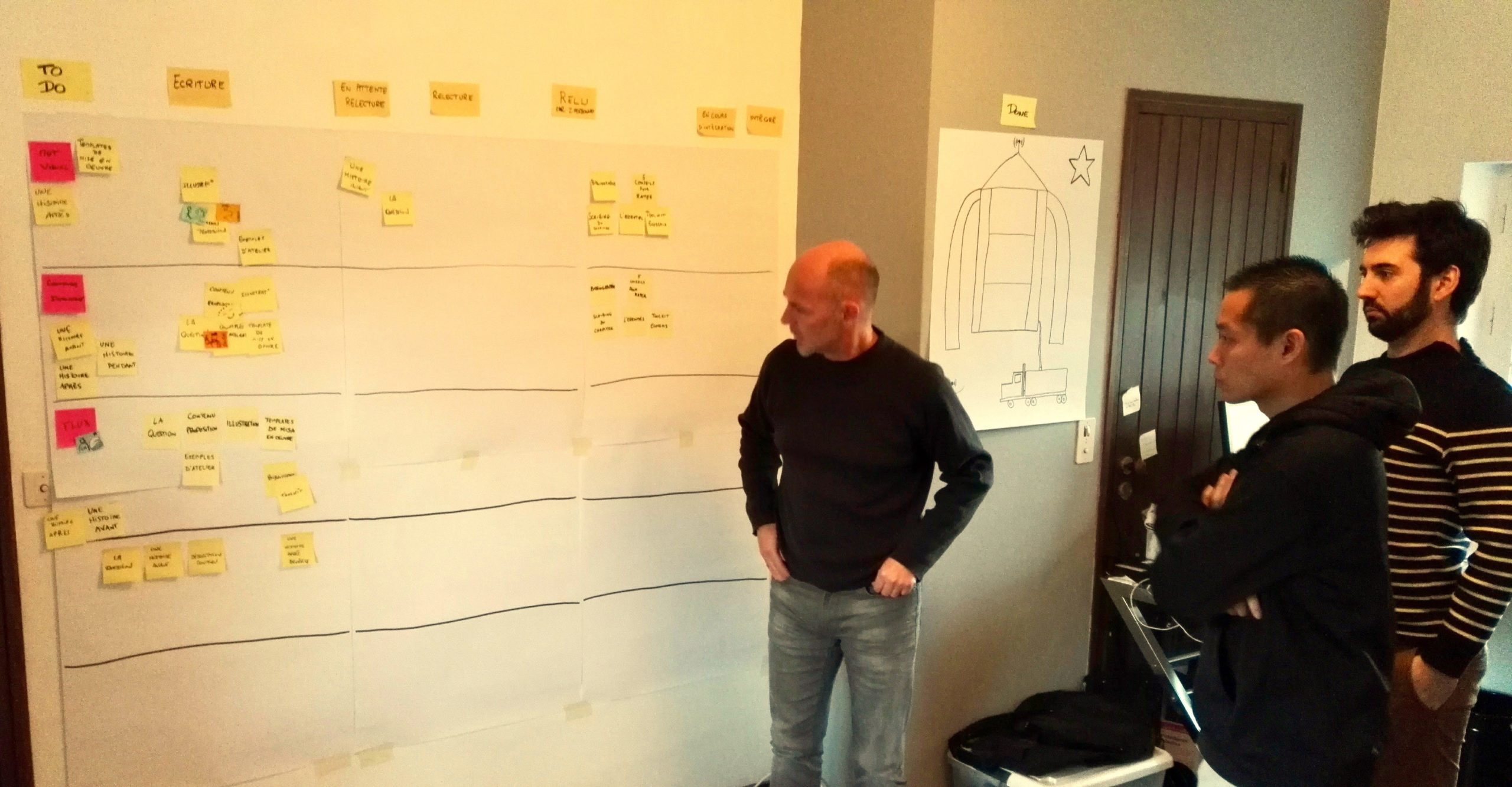
La revue de sprint fut assez rapide. Nous avons simplement mis à jour le Management Visuel et partagé ce que l’on avait pu accomplir depuis le Stand-up. Chaque groupe avait pu avancer sur sa partie mais personne n’avait de véritable vision d’ensemble, sauf peut-être Christophe qui avait pu un petit peu graviter dans les groupes.
Maintenant, le constat était simple : nous avions encore du mal à trouver nos marques, à structurer notre écriture et donc à prendre un rythme. Nous n’arrivions pas à terminer ce que l’on commençait !
17.15 – Rétrospective
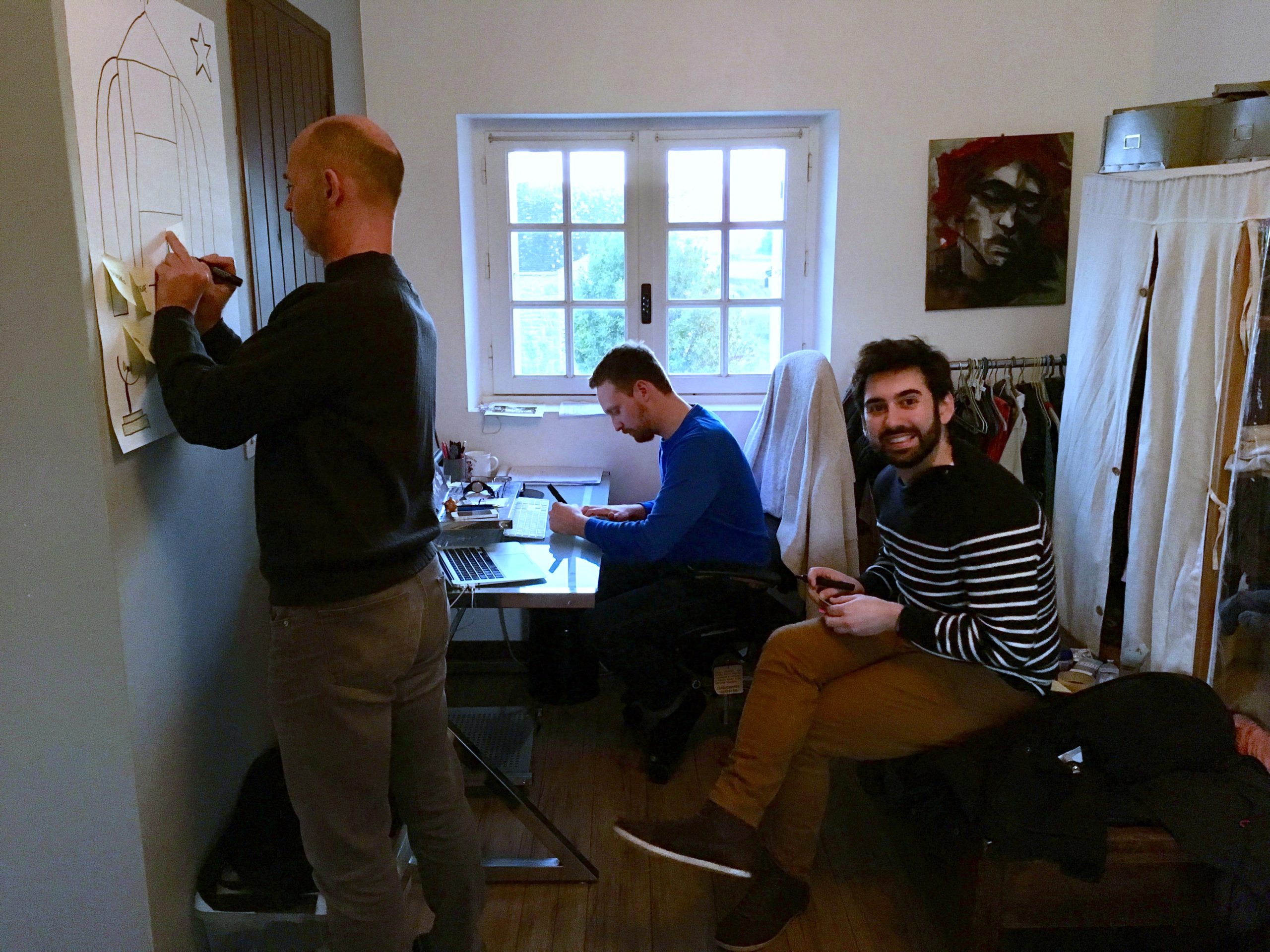
Pour cette toute première rétrospective, j’ai eu l’honneur d’être le facilitateur volontaire désigné ! Quel esprit d’équipe n’est-ce pas ? 😛
Dans un souci d’efficience, j’ai proposé de partir sur un format binaire de rétrospective :
- « Qu’est-ce qui marche ? » : pour capitaliser au plus tôt sur nos apprentissages
- « Qu’est-ce qu’on change ? » : pour partager les challenges de chacun et prendre des actions rapides d’amélioration
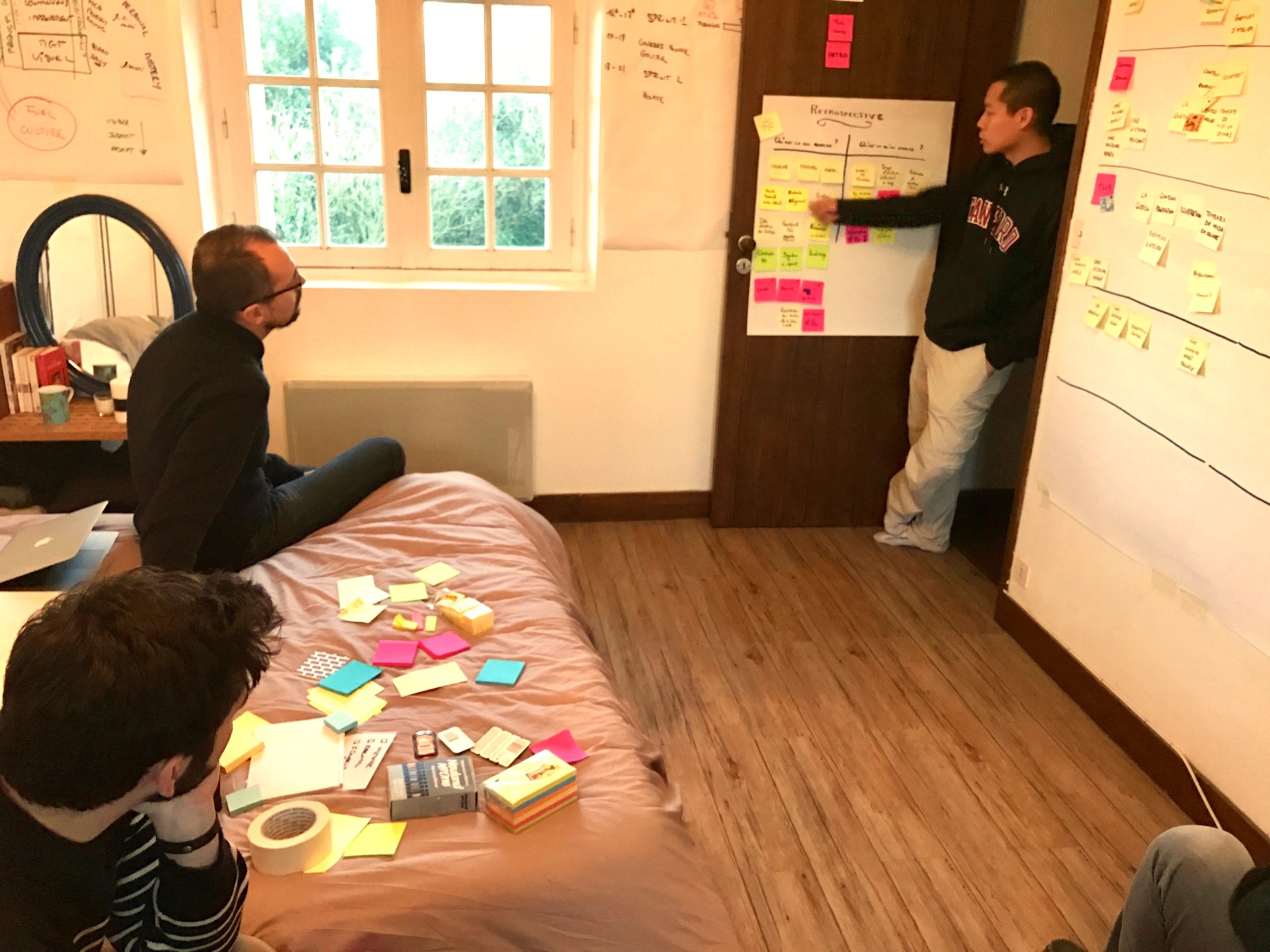
Après 5 mn de réflexion individuelle, nous avons pu débriefer tous ensemble. Voici les résultats obtenus :
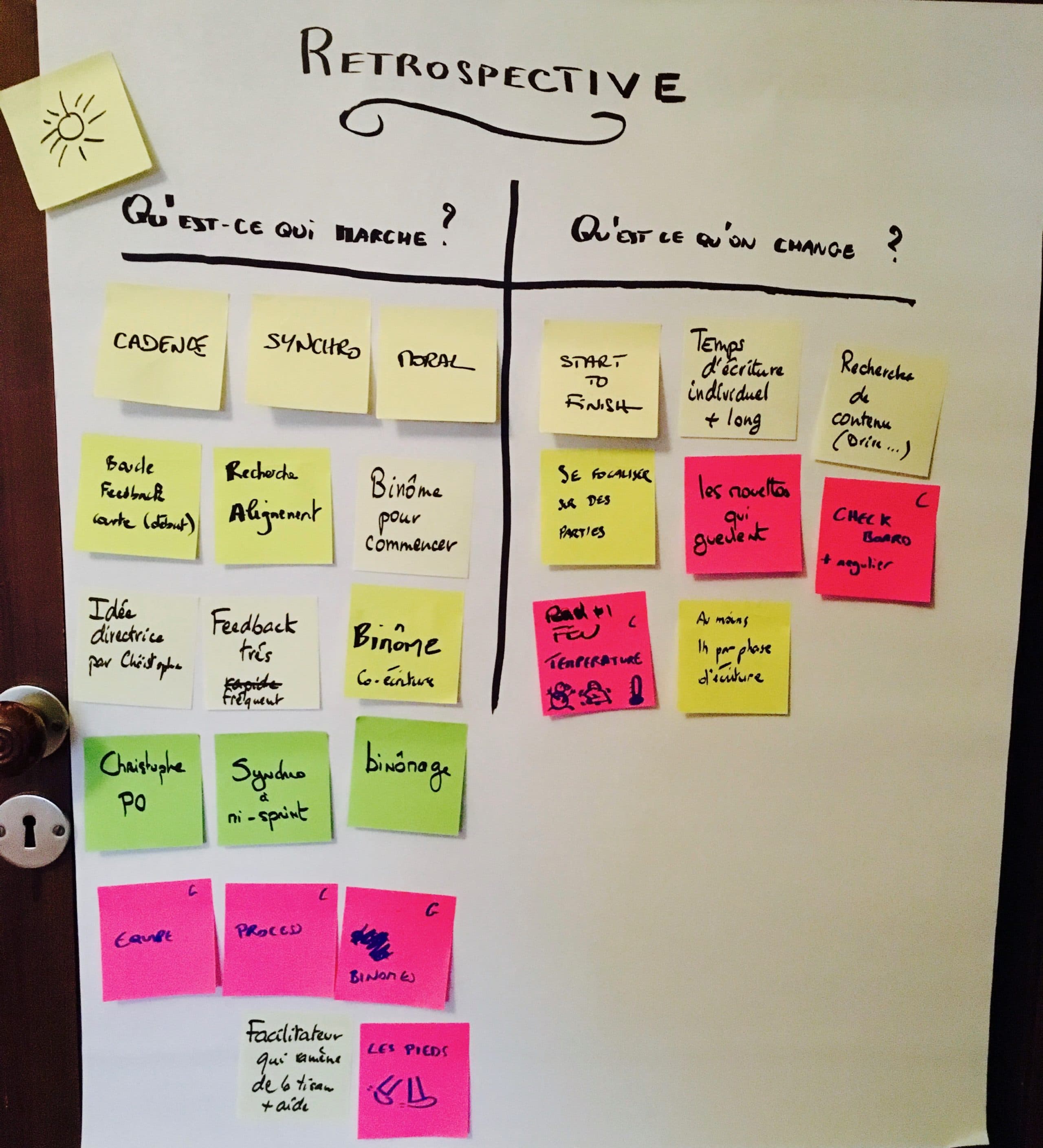
Ce qui marche :
- Les points de synchronisation réguliers nous aident beaucoup, surtout en ce début de projet rempli d’incertitudes
- Le binômage a une grande valeur pour co-écrire, relire et s’ouvrir le champ des possibles
- La posture de Christophe en tant que PO est nécessaire pour nous aligner sur l’objectif – qui n’est, de mon ressenti du moment, clair que pour lui
Ce que l’on doit changer :
- Commencer à terminer – On s’est probablement éparpillé sur trop de sujets en même temps : histoire, contenu, templates… il faudrait se focaliser sur des parties pour pouvoir les valider
- Trouver un temps d’écriture convenable – ils semblaient un peu courts pour certains. En effet, le temps de s’y mettre, on arrivait au point de synchronisation qui nous ressortait du sujet.
17.45 – Courses et on continue !
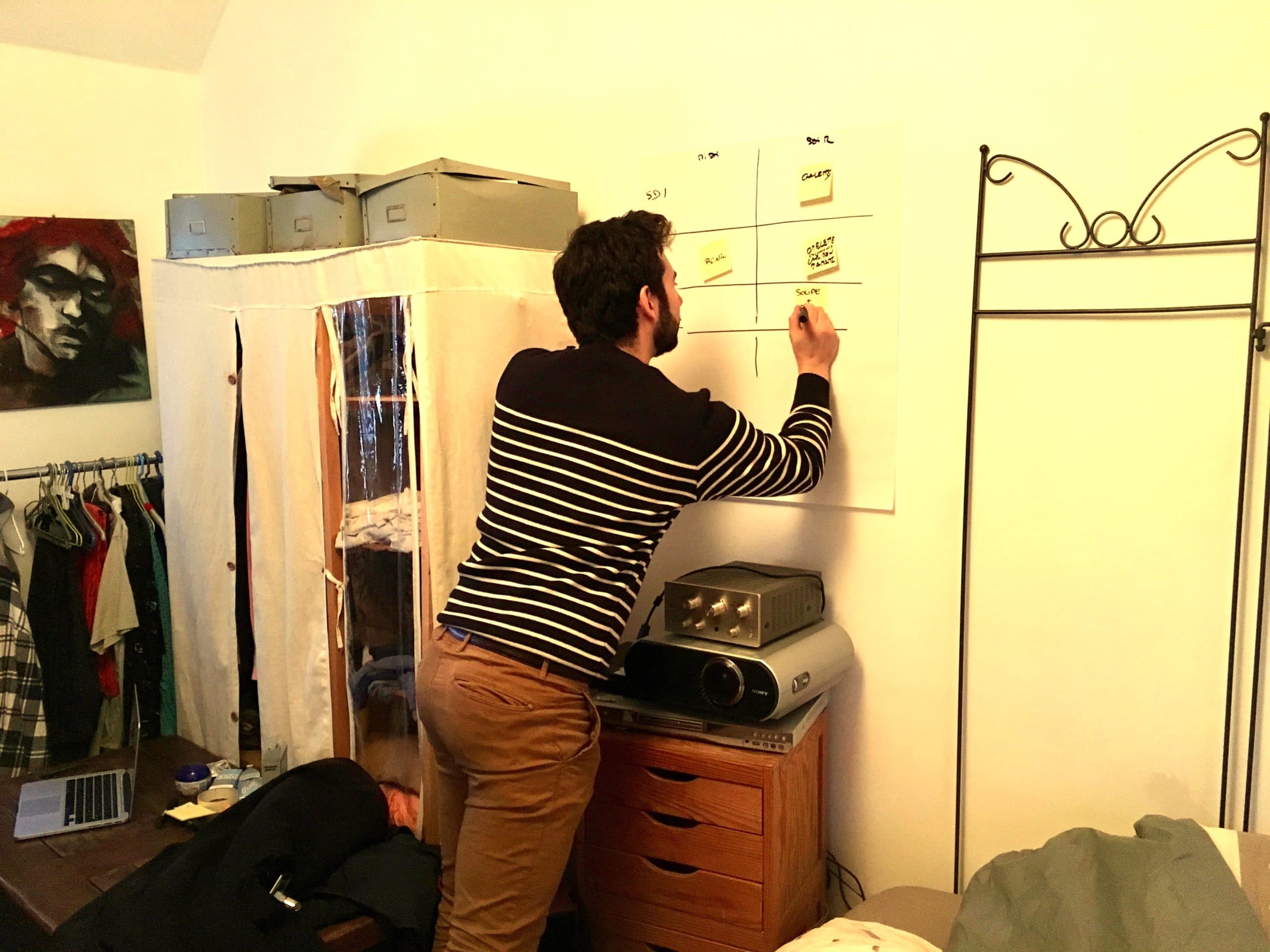
Il n’est cependant pas nécessaire que nous y allions tous, Christophe, Arnaud et moi décidons donc de rester pour continuer sur notre lancée.
Le calme de la maison a été plutôt bénéfique : l’occasion de mettre en oeuvre des éléments de la rétrospective comme le fait de terminer ce que l’on a commencé. J’en profite pour compléter le contenu issu des supports sur lesquels nous nous étions appuyés. Nous pourrons travailler plus librement dessus avec Julien lorsqu’il reviendra.
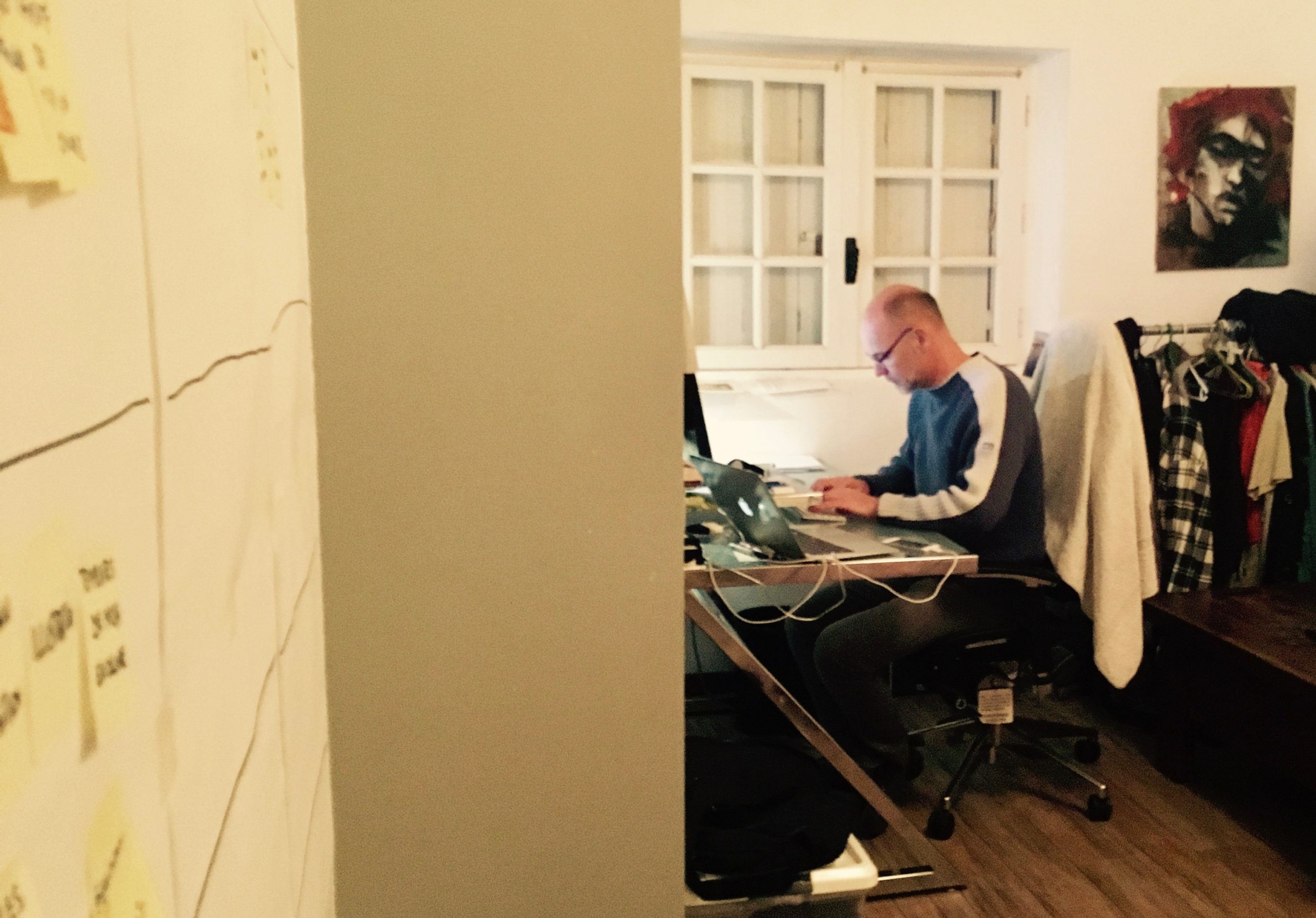
De son côté, Christophe en profite pour compléter le module Flux qu’il avait laissé de côté pour pouvoir guider et orienter chacun des groupes dans leur écriture.
19.00 – Écriture
De retour des courses, l’équipe se réunit pour repartir. Nous décidons cette fois de nous lancer dans un sprint d’une heure (de 19.15 à 20.15) avec 15 mn de synchronisation à la fin. Cela nous permettra de poser notre capacité de production de la journée et nous projeter sur la suivante qui elle implique un atterrissage : l’intégration de notre premier incrément !
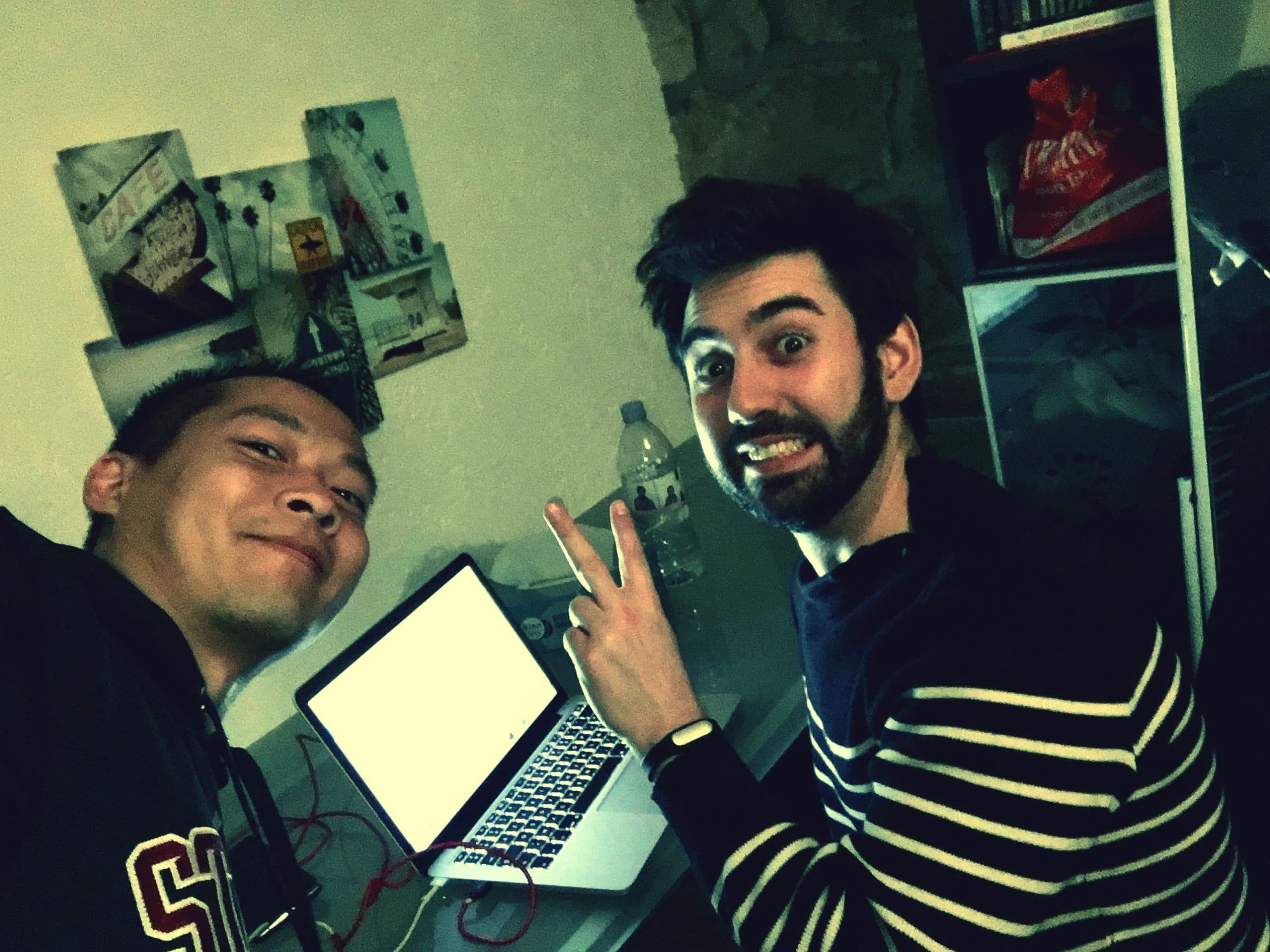
C’est parti avec Julien, motivés pour avoir en cette fin de journée quelque chose qui nous convienne ! Suite à mon travail sur le contenu, nous binômons alors sur la structure et l’ordonnancement des différents sujets les uns avec les autres. En effet, ayant déposé une certaine quantité d’éléments les uns après les autres, j’ai peu à peu fini par perdre le fil conducteur : l’apport de mon binôme fut alors énorme à ce moment pour rendre la lecture plus fluide et plus cohérente.
Julien a donc usé de ses qualités de synthèse pour réorganiser le contenu, tout en s’appuyant sur moi pour en comprendre certaines subtilités. Nous y avons rajouté un peu de contexte en nous appuyant sur ce qu’avaient fait Grégory et Arnaud dans leur module. Et oui, nous avons commencé à regarder autour de nous pour assurer la cohérence générale à la fois en terme de structure mais aussi en style ! 🙂
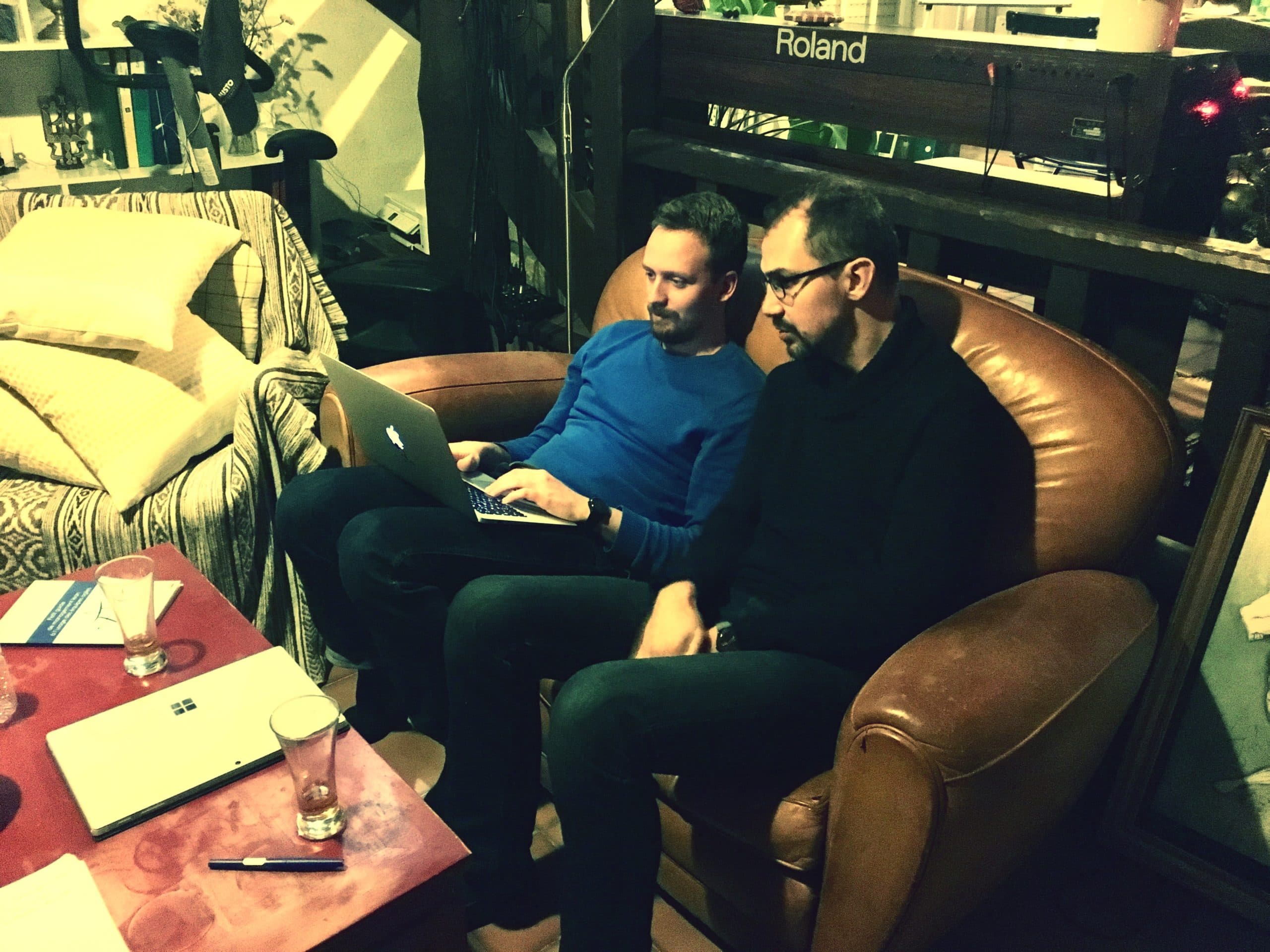
Un petit passage vers nos collègues du Management Visuel : ils sont repartis en binôme et commencent à donner du corps à leur module ! 😉
21.00 – Revue et rétrospective
Notre couple revue / rétrospective se déroule plutôt rapidement sachant que les points de synchronisation étaient très rapprochés depuis le début. Maintenant, en évoquant les différentes thématiques, nous nous rendons compte qu’il y a peut-être des agencements à faire : certains sujets traités dans la partie Amélioration Continue comme le suivi des impedimentas ou le protocole de Daily Meeting vont devoir être déplacés dans la partie Management Visuel.
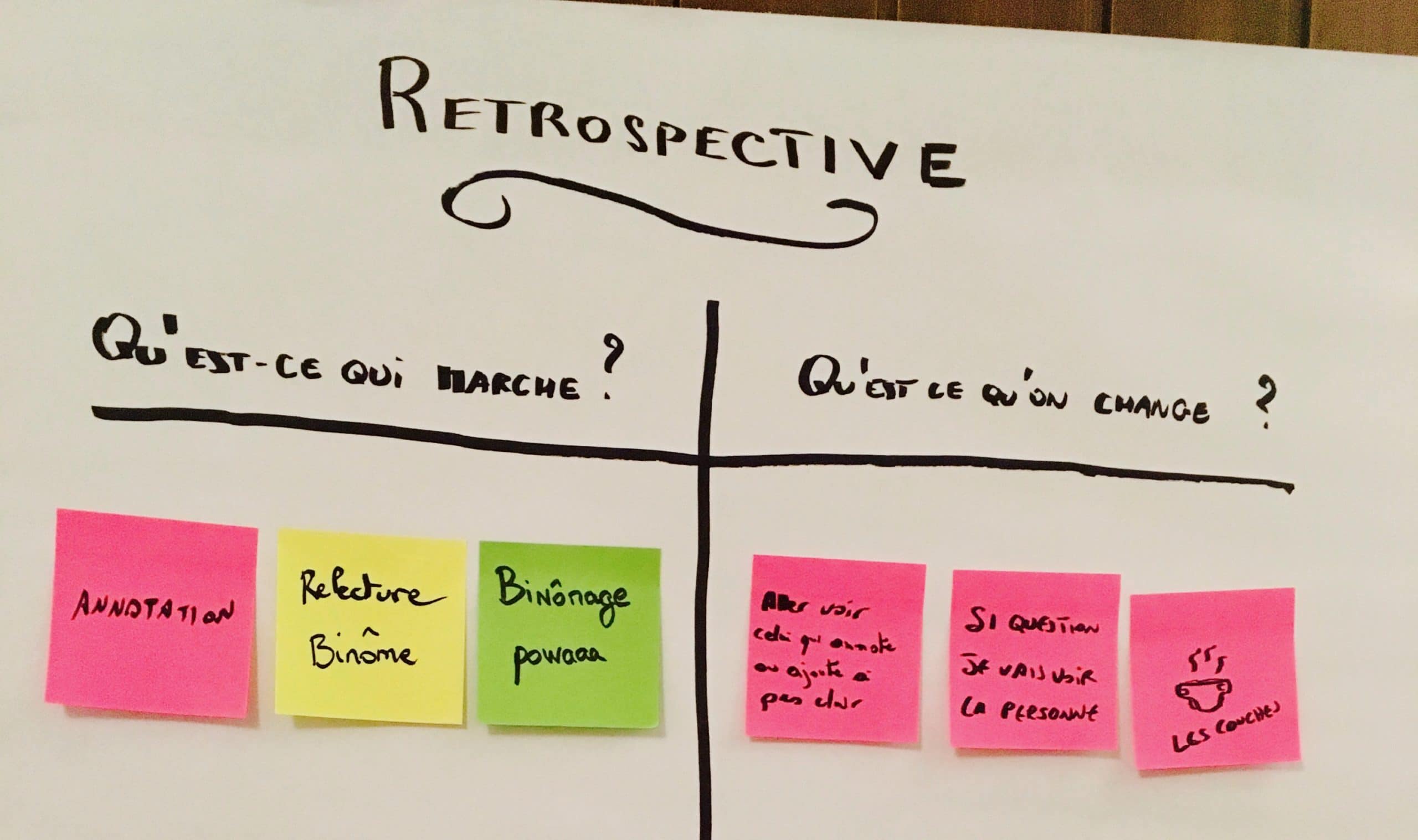
Les éléments qui commencent à émerger sont de l’ordre de l’organisation.
Ce qui marche :
- Le principe d’annotation dans nos documents que ce soit pour soi-même ou par d’autres membres d’équipe
- Le travail en binôme reste une valeur sûre
Ce que l’on doit changer :
- Aller voir directement les personnes si l’on a une question
Note : N’est-ce pas donc intéressant de voir que l’on tend à reproduire des patterns habituels des équipes alors que l’on est à moins de 5m les uns des autres ? Individus et interactions, c’est ce que nous devions bien garder en tête ! 😉
Apprentissages
Dans cette première partie de PI, nous apprenons à travailler ensemble :
- Nous recherchons un alignement d’équipe par des points de synchronisation fréquents. Cela nous permet d’inspecter et d’adapter notre processus en conséquence
- Le travail en binôme nous aide à prendre du recul et à mieux collaborer ensemble
- Le rôle de Christophe en tant que PO est essentiel pour garantir une homogénéité du contenu et un partage de la vision projet
Les choses se mettent en place doucement mais nous n’arrivons pas encore à terminer ce que l’on commence. Nous allons devoir mieux nous organiser pour pouvoir espérer atteindre notre objectif de livraison du PI#1 demain soir ! 😉
La suite au prochain épisode, Boooksprint : au coeur du PI#1 (Partie 2).

